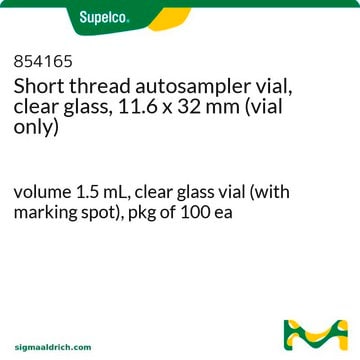89802
4-(Dimethylamino)azobenzene-4′-sulfonyl chloride
for HPLC derivatization, LiChropur™, 98.0-102.0% (AT)
Synonym(s):
4-(4-Dimethylaminophenylazo)benzenesulfonyl chloride, DABS-Cl, Dabsyl chloride
About This Item
Recommended Products
grade
for HPLC derivatization
Quality Level
Assay
98.0-102.0% (AT)
form
crystals
quality
LiChropur™
technique(s)
HPLC: suitable
mp
185 °C (dec.) (lit.)
SMILES string
CN(C)c1ccc(cc1)\N=N\c2ccc(cc2)S(Cl)(=O)=O
InChI
1S/C14H14ClN3O2S/c1-18(2)13-7-3-11(4-8-13)16-17-12-5-9-14(10-6-12)21(15,19)20/h3-10H,1-2H3/b17-16+
InChI key
VTVWTPGLLAELLI-WUKNDPDISA-N
Looking for similar products? Visit Product Comparison Guide
General description
4-(Dimethylamino)azobenzene-4′-sulfonyl chloride, a well-known UV-labeling agent, is generally used for the derivatization of N-terminal amino acids, imidazole derivatives, polyamines, etc. prior to their chromatographic determination due to the former′s capacity to covalently bind to the substrates. Its derivatives typically absorb UV radiation between the range of 436-460 nm. This method of derivatization is regarded as superior compared to other methods owing to the simplicity of the procedure, high stability and reproducibility, best resolution of the analytes, etc.
Application
Legal Information
Signal Word
Danger
Hazard Statements
Precautionary Statements
Hazard Classifications
Skin Corr. 1B
Storage Class Code
8A - Combustible corrosive hazardous materials
WGK
WGK 3
Flash Point(F)
Not applicable
Flash Point(C)
Not applicable
Choose from one of the most recent versions:
Already Own This Product?
Find documentation for the products that you have recently purchased in the Document Library.
Our team of scientists has experience in all areas of research including Life Science, Material Science, Chemical Synthesis, Chromatography, Analytical and many others.
Contact Technical Service
![4-[4-(Dimethylamino)phenylazo]benzoic acid N-succinimidyl ester ≥98.0% (HPLC)](/deepweb/assets/sigmaaldrich/product/structures/120/235/500b5276-3ce2-43b7-9588-3883f13d4ff7/640/500b5276-3ce2-43b7-9588-3883f13d4ff7.png)





